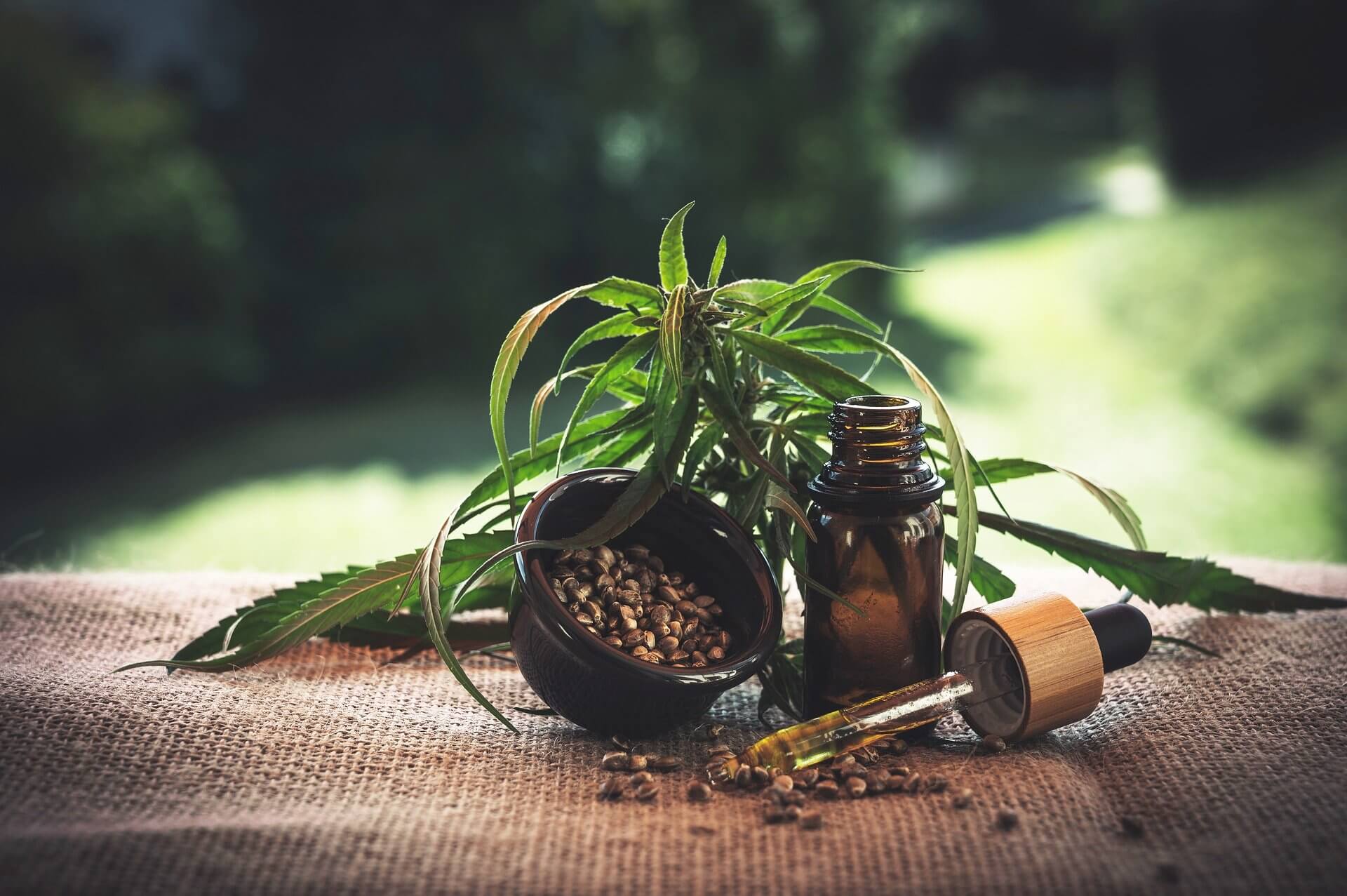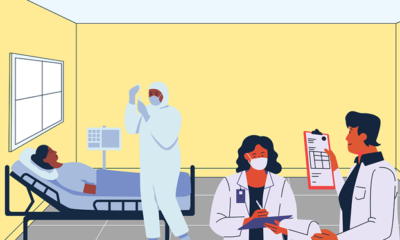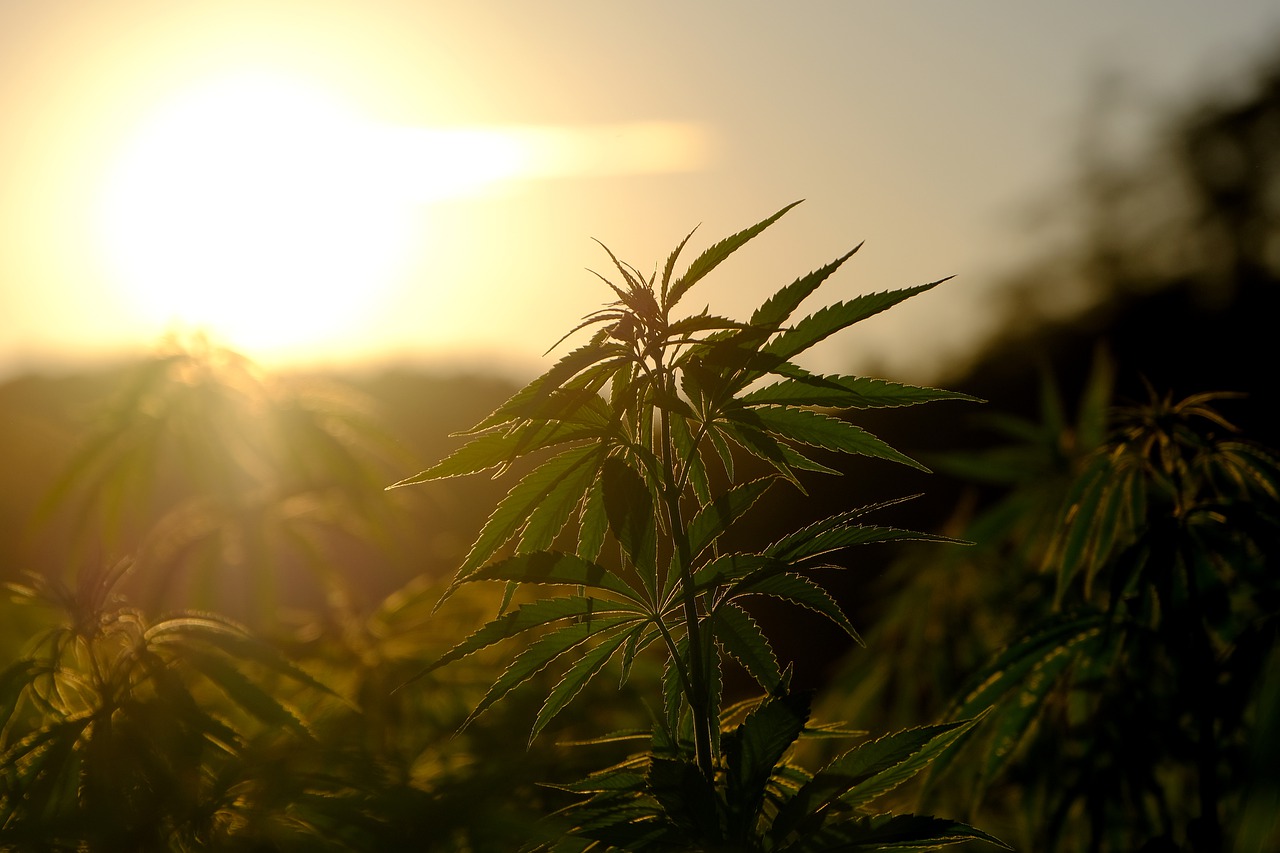News & Entertainment
What to Know About Feminized Cannabis Seeds

Female cannabis plants are the only ones capable of producing buds when it comes to cannabis cultivation. Feminized cannabis seeds produce only female plants, and they can almost always be counted on to produce flowers on every plant that emerges from their shells. Normally, a male cannabis plant will pollinate a female cannabis plant, and it is through this process that seeds are created.
The resulting harvest of ordinary cannabis seeds will be approximately half male and half female seeds, with the remainder being a mix of both. This is a time-consuming and expensive inefficiency for the flower producer. If the seeds are not feminized, it is possible that roughly half of a grow will be thrown away at harvest time.
What Are the Benefits of Feminizing Your Seeds?
Think about taking in the effort to establish a tiny six-plant garden only to discover that only three of the plants you’ve nurtured generate buds since they’re both male and female. Feminization of seeds is recommended if you find this to be a disappointing waste of effort. Menstruating cannabis plants waste space and resources unless they are being kept for the purpose of developing a successful breeding program for female cannabis plants.
When you use feminized-seeds you eliminate the danger of unintentional pollination resulting in seedy buds or the prospect of developing male plants that do not produce flowers.A major concern regarding feminized cannabis seeds is that they will create hermaphrodites, which is not true in most cases.
If you acquire your seeds from a reliable seller, you will not have to worry about this. Women who practiced feminization did it deliberately, selecting female plants that were genetically susceptible to becoming intersexual. That means the seeds got those genes. Chemicals may now be given to plants without changing their genetic makeup, which is a big step forward.
How to Feminize Cannabis Seeds
Feminization of seeds can be accomplished in two ways: spontaneously, or with the application of chemicals that force a female plant to pollinate.The female cannabis plant that has been severely stressed will spontaneously transform into a hermaphrodite and create pollen sacs to self-pollinate in the wild.
Even though this is a survival mechanism inherent in all-female plants, it is only activated when the plant’s lineage is in danger of being extinguished. As a result, many of the seeds produced will have been naturally selected to be intersexual, which can result in a disastrous breeding condition.
A hermaphrodite can pollinate female plants that are intended for harvesting, causing the buds to stop developing and to generate seeds as a result of the pollination.In addition, using the natural method of feminizing plants increases the risk of developing weak strains. This is a sign that the genetic makeup of a female plant has been compromised to the point where it needs to undergo a sex change to survive. The environment is the source of the plant’s genetic weakness.
The application of colloidal silver to a female cannabis plant is the favored way of feminizing cannabis plants in the cannabis industry. These substances cause the plant to produce pollen sacs without interfering with the genes of the several lineages.
Here’s how you can do it at your convenience:
- Select two female plants from the group. Make certain that each plant possesses powerful genes. For one plant to produce male sex organs, it will be chemically treated, while the other will be pollinated.
2. Make sure to get colloidal silver solution that contains at least 30 parts per million (PPM) of silver. Generally speaking, you should be able to find colloidal silver in any store that sells nutritional supplements.
3. The colloidal silver solution should be sprayed. Directly apply colloidal silver to the plant’s bud sites daily for the first 3 to 4 weeks of the plant’s flowering stage, until the bud sites are completely saturated with silver. Once you notice that the pollen sacs have emerged and are beginning to open, you can come to a halt. Because the buds that form on this plant may have been coated with colloidal silver, it is not recommended that you smoke them.
4. Collect the pollen that has fallen. When the pollen sacs become large and begin to break open, you will know that they are ready to be harvested and collected. Simply take the pollen sacs from the plant and allow them to dry naturally for about a week before replanting. Once they are dry, you can shake the sacs in a bag to collect the feminised pollen that has accumulated.
5. Pollinate the second plant with the pollen from the first. Make use of the pollen you collected to pollinate the other female plant in the area (that plant should be about 2 to 3 weeks into its flowering stage).
In approximately six weeks, you will be able to harvest your seeds. When the calyxes on the pollinated plant get inflated and show signs of seed production, it is time to harvest the seeds. This process takes around 6 weeks.
The Drawbacks of Feminization
As previously stated, old school feminizers exploited intersex-prone females to create feminized seeds in order to maintain their reputation. Despite the fact that there are more effective ways available today, some farmers continue to use this one.
If you’re looking to purchase feminized cannabis seeds, you should be cautious about where you buy them. Inquire how the breeder feminizes their seeds to prevent obtaining seeds that will produce hermaphrodites in the future and for this confusion to clear United Strains of America can help you.
However, even if they don’t become intersexual, there is a possibility that a considerable proportion of the seeds will be male. By feminizing the seeds yourself, you can completely eliminate this risk from your life. We’ll go over how to do it in more detail below.
The second disadvantage of feminizing seeds only applies if you are attempting to establish a breeding program for your plants. You’ll need both male and female plants if you want to develop a variety of different strains.
Due to the fact that male plants do not form buds on their own, it is hard to determine what kind of genetics they can pass on without breeding them with more female plants. You should breed with numerous male plants until you achieve the desired outcomes if you are interested in generating a certain trait profile for your plants.
News & Entertainment
Unforgettable Tragedies A Comprehensive Look at the World’s Largest Natural Disasters in History

Natural disasters have left an indelible mark on human history, shaping the course of civilizations and leaving devastation in their wake. From catastrophic earthquakes to deadly tsunamis, and powerful hurricanes to devastating volcanic eruptions, the world has witnessed numerous natural disasters of unprecedented scale and magnitude. In this comprehensive guide, we delve into the history of the largest natural disasters the world has ever known, exploring their causes, impacts, and legacies.
Section 1 Understanding Natural Disasters
1.1 Definition and Classification: Natural disasters are sudden and extreme events caused by natural processes of the Earth, such as geological, meteorological, and hydrological phenomena. These disasters can take various forms, including earthquakes, hurricanes, floods, tsunamis, volcanic eruptions, droughts, wildfires, and landslides. Natural disasters are classified based on their primary cause and the type of hazards they pose to human life, property, and the environment.
1.2 Causes of Natural Disasters: Natural disasters are caused by a combination of natural processes and human activities, including tectonic movements, weather patterns, climate change, deforestation, urbanization, and land-use practices. Geological disasters, such as earthquakes and volcanic eruptions, are situs slot primarily driven by movements of the Earth’s crust, while meteorological disasters, such as hurricanes and floods, are influenced by atmospheric conditions and weather systems.
1.3 Impacts of Natural Disasters: Natural disasters can have devastating impacts on communities, economies, and ecosystems, causing loss of life, displacement of populations, destruction of infrastructure, disruption of essential services, and environmental degradation. The severity of these impacts depends on various factors, including the magnitude and intensity of the disaster, the vulnerability of affected populations, and the effectiveness of disaster preparedness and response efforts.
Section 2 Earthquakes
2.1 The Great Tangshan Earthquake (1976): The Great Tangshan Earthquake, which struck northeastern China on July 28, 1976, is one of the deadliest earthquakes in recorded history. With a magnitude of 7.8 on the Richter scale, the earthquake caused widespread destruction across the city of Tangshan and its surrounding areas, claiming an estimated 242,000 lives and leaving millions homeless. The earthquake’s impact was exacerbated by inadequate building construction, lack of earthquake preparedness, and political instability in China at the time.
2.2 The Sumatra-Andaman Earthquake and Tsunami (2004): The Sumatra-Andaman Earthquake, also known as the Indian Ocean Tsunami, occurred on December 26, 2004, off the coast of Sumatra, Indonesia. With a magnitude of 9.1-9.3, it was one of the most powerful earthquakes ever recorded, triggering a devastating tsunami that swept across the Indian Ocean, affecting 14 countries and causing widespread destruction and loss of life. The tsunami claimed an estimated 230,000-280,000 lives and left millions displaced, making it one of the deadliest natural disasters in history.
Section 3 Hurricanes and Typhoons
3.1 Hurricane Katrina (2005): Hurricane Katrina, a Category 5 hurricane, made landfall on the Gulf Coast of the United States on August 29, 2005, causing catastrophic damage to the city of New Orleans and its surrounding areas. The storm surge breached levees, leading to widespread flooding, destruction of homes and infrastructure, and loss of life. Hurricane Katrina resulted in over 1,800 fatalities and billions of dollars in property damage, highlighting the vulnerabilities of coastal communities to extreme weather events and the importance of disaster preparedness and response.
3.2 Typhoon Haiyan (Yolanda) (2013): Typhoon Haiyan, known locally as Yolanda, struck the Philippines on November 8, 2013, with winds reaching speeds of up to 195 mph, making it one of the strongest tropical cyclones ever recorded. The typhoon caused widespread devastation across the central Philippines, particularly in the provinces of Leyte and Samar, where entire communities were flattened by the storm surge and powerful winds. Typhoon Haiyan resulted in over 6,000 fatalities, displaced millions of people, and caused extensive damage to infrastructure and agriculture.
Section 4 Floods and Tsunamis
4.1 The Yellow River Floods (1887): The Yellow River Floods, also known as the Huang He Floods, occurred in China in September 1887, following heavy rainfall and the breaching of dikes along the Yellow River. The floods inundated vast areas of farmland, villages, and cities, causing widespread destruction and loss of life. Estimates of the death toll from the floods vary widely, with some sources suggesting that millions perished as a result of the disaster, making it one of the deadliest floods in recorded history.
4.2 The Indian Ocean Tsunami (2004): The Indian Ocean Tsunami, triggered by the Sumatra-Andaman Earthquake in December 2004, was one of the deadliest tsunamis in history, affecting countries across the Indian Ocean basin. The tsunami waves, reaching heights of up to 100 feet, struck coastlines with devastating force, causing widespread destruction and loss of life. The tsunami claimed an estimated 230,000-280,000 lives and displaced millions of people, highlighting the destructive power of these natural phenomena.
Section 5 Volcanic Eruptions
5.1 The eruption of Mount Vesuvius (79 AD): The eruption of Mount Vesuvius in 79 AD is one of the most famous volcanic disasters in history, resulting in the destruction of the Roman cities of Pompeii and Herculaneum. The eruption buried the cities under a thick layer of volcanic ash and pumice, preserving them in a remarkable state of preservation for centuries. The eruption claimed thousands of rolet lives and serves as a reminder of the unpredictable and destructive nature of volcanic activity.
5.2 The eruption of Mount Tambora (1815): The eruption of Mount Tambora in 1815, located in present-day Indonesia, is one of the most powerful volcanic eruptions in recorded history. The eruption ejected massive amounts of volcanic ash, gas, and debris into the atmosphere, causing global climatic effects and triggering the “Year Without a Summer” in 1816. The eruption resulted in tens of thousands of deaths from famine, disease, and other secondary effects, making it one of the deadliest volcanic disasters in history.
Conclusion
Natural disasters have played a significant role in shaping human history, leaving a legacy of destruction, resilience, and adaptation. From earthquakes and hurricanes to floods and volcanic eruptions, the world has witnessed numerous natural disasters of unprecedented scale and magnitude, leaving lasting impacts on affected communities and ecosystems. While advances in science, technology, and disaster preparedness have helped mitigate the impacts of natural disasters, the threat remains ever-present, underscoring the importance of resilience, preparedness, and international cooperation in building safer and more resilient communities in the face of future disasters.
News & Entertainment
Moving To Glen Ellyn, IL What To Know

Glen Ellyn, Illinois, represents the ideal combination of peaceful suburban life and easy city access. This hamlet, located in the heart of DuPage County, is more than simply a place on a map; it’s a community full of charm and a sense of belonging. Glen Ellyn’s allure stems from its ability to provide a calm, family-friendly ambiance while allowing easy access to the vibrant metropolitan life of adjacent Chicago. The village’s strategic position makes it an ideal choice for families, professionals, and individuals looking for the best of both worlds.
Understanding Glen Ellyn’s Unique Charm.
Glen Ellyn, Illinois, has a unique combination of suburban charm and dynamic community life, making it appealing to various demographics. With a population of over 27,000, it is a diversified city that includes a large number of white people as well as a considerable representation of African American, Asian, and Hispanic populations. Glen Ellyn’s median age is 42, indicating a mature and family-oriented neighborhood. The suburb’s economic wealth is evident, with a typical family income of $107,000, suggesting a high level of life and access to great amenities and services.
Glen Ellyn’s cultural and social life is particularly noteworthy, with a year-round calendar of events and festivals. Notable events include the famous Taste of Glen Ellyn, a family-friendly culinary festival featuring local cuisine and live music, as well as the Glen Ellyn Jazz Festival, which draws music fans from all over the region. The village’s devotion to arts and theater is evident in places such as the McAninch Arts Center at the College of DuPage, which hosts a variety of acts ranging from plays to concerts. Glen Ellyn has over 30 parks and Lake Ellyn for leisure and recreational hobbies. The Illinois Prairie Path is perfect for walks, jogs, and bike rides.
Cost of Living in Glen Ellyn, IL
Living expenses in Glen Ellyn, Illinois, exceed the United States and Illinois norms. With a total cost of living index of 108.1, Glen Ellyn is 8.1% more expensive than the national average and 15.4% more expensive than the average in Illinois. The typical house price in Glen Ellyn is $467,600, much more than the national average of $338,100 and the Illinois average of $241,700. This fact mainly accounts for the housing expenses component of the total. A two-bedroom apartment in Glen Ellyn would run you around $1,360 a month.
The cost of living in Glen Ellyn is about 8% more than the national average regarding food, healthcare, and transportation. Ground beef, milk, and potatoes are typical supermarket goods that are priced more than the national average. Healthcare prices are higher than average, with the average cost of a doctor’s appointment being approximately $112 and the average cost of a haircut being around $23.60. A minimum yearly salary of $89,640 is required for a family to live comfortably in Glen Ellyn, while an individual would need about $47,600.
Glen Ellyn’s Crime Rate
Glen Ellyn, Illinois, is considered a reasonably safe town compared to the state and national averages. Glen Ellyn’s total crime rate is considerably lower than the US average, and its violent crime rate is 66% lower than the US average. Because of this, Glen Ellyn is safer than 82% of American communities. Glen Ellyn has a 1 in 118 risk of becoming a victim of any crime, which is far lower than in other places.
In particular, the annual rate of violent crimes is a relatively low 1.713 events per 1,000 persons. Most people believe that Glen Ellyn’s northeastern region is the least dangerous for this kind of crime. However, there can be differences in the crime rates in different areas of the city. For example, more crime may occur in the east neighborhoods compared to the north of the town. Glen Ellyn’s crime rate is among the lowest for cities of its size in the country, suggesting that its citizens live in a generally safe and secure environment.
Education and Employment
Glen Ellyn, Illinois, has a rich educational landscape led by the College of DuPage (COD), Illinois’ most prominent community college. COD’s campus encompasses 254 acres and offers various academic disciplines. With almost 25,000 students served annually, the college is committed to providing relevant coursework and targeted instruction in over 150 fields of study.
COD supports diversity and inclusivity by providing equal job opportunities in various academic and professional full-time and part-time positions. The college is known for its fundamental principles of integrity, honesty, respect, responsibility, and equity, which serve as the foundation for its objective of promoting student achievement and institutional growth.
Educational career prospects in the Glen Ellyn area extend beyond COD. Glen Ellyn School District 41 is part of a collaborative initiative with neighboring districts that offers a variety of job opportunities for educators and administrative staff. The district is actively committed to community participation, strategic planning, and meeting modern educational demands, including e-learning projects.
These initiatives demonstrate the community’s commitment to upholding high academic standards and creating a supportive environment for students and faculty. Glen Ellyn’s holistic education approach helps students and professionals, creating a vibrant and gratifying work environment.
What is Glen Ellyn, IL known for?
Glen Ellyn, IL is known for its natural beauty and outdoor recreation. The Glen Ellyn Park District includes some beautiful parks and facilities for outdoor activities. An outdoor swimming pool, four recreational facilities, and two beautiful lakes are among the agency’s 29 parks. Lake Ellyn Boathouse and Ackerman Sports & Fitness Centre have many alternatives.
Aside from Glen Ellyn, the region is home to several natural attractions. The Russell R. Kirt grassland, an 18-acre restored grassland and savannah, is popular among nature enthusiasts and scientists. This area is known for its abundance of sunflowers and also serves as a wildlife monitoring station. Guided tours are available to provide an even more immersive experience.
In addition, the Morton Arboretum in Lisle, just a short drive from Glen Ellyn, is a well-known tree research center and outdoor museum with approximately 222,000 plant specimens. With its natural woodlands and prairie vistas, this location provides a tranquil setting for educational visits. Glen Ellyn’s proximity to various biological features makes it appealing to those looking for relaxation and outdoor adventure.
Practical Matters: Navigating Daily Life in Glen Ellyn.
Living in Glen Ellyn, IL, mixes modern facilities with a community-oriented lifestyle. This town has everything you need for everyday life, including retail attractions, unique food options, and full-service healthcare facilities. Its downtown area is known for its lovely small-town atmosphere, enhanced by unique boutique shops and local cafés, providing a shopping experience unlike any other. Glen Ellyn’s great location makes mobility easier; it is well-connected by major highways and has fast public transit, including Metra rail service, simplifying daily journeys to Chicago.
Glen Ellyn has a robust and welcoming community, with various organizations and clubs catering to different interests. The Glen Ellyn Public Library serves as a hub for community interaction, offering a variety of activities and events for people of all ages. The village’s sense of community is reflected in its active neighborhood associations and numerous volunteer opportunities.
Is Glen Ellyn a good place to live? Glen Ellyn’s rich history, lively cultural programs, and gorgeous natural settings ensure that everyone, from young professionals to families and seniors, may enjoy a high quality of life. Navigating Glen Ellyn is simple, and experienced movers in Glen Ellyn, IL, can assure a smooth and hassle-free moving experience for those considering relocating.
Embracing Your New Home
Moving to Glen Ellyn, IL, is more than simply a change of address; it’s an opportunity to immerse oneself in a community that combines the elegance of suburban living with the ease of city life. This charming village snuggled securely in the Chicagoland area, provides inhabitants with a unique combination of small-town community spirit and big-city facilities. Glen Ellyn is where history lives on via its well-preserved buildings and treasured landmarks, inviting those who value the past to explore and enjoy.
Glen Ellyn stands out for its top-rated schools and accessibility to higher education institutions like the College of DuPage. This emphasis on education represents the community’s desire to grow and learn. Another appealing feature of Glen Ellyn is its natural beauty. Outdoor enthusiasts can connect with nature in various settings, including the tranquil Lake Ellyn and the lively Illinois Prairie Path. The village’s numerous parks, recreational facilities, and community events cater to diverse interests and hobbies, ensuring that all people lead a dynamic and active lifestyle.
News & Entertainment
Cracking the code of video content optimization Best practices for every platform

In the digital era, where visual content reigns supreme and captures audiences’ attention, video content optimization has emerged as a critical aspect of any successful marketing strategy. This article aims to demystify the best practices for optimizing video content across various platforms, empowering businesses to fully harness the potential of their video content and achieve enhanced viewer engagement. By implementing these strategies, companies can ensure that their videos stand out in the crowded digital landscape, attract more viewers, and effectively convey their message to the target audience.
Whether it’s optimizing video titles, descriptions, or thumbnails, understanding each platform and consistently tailoring the content can make a vital difference in the reach of a video marketing campaign. With the ever-increasing popularity of video content consumption, mastering video content optimization is a crucial skill that can give businesses a competitive edge and help them connect with their audience on a deeper level.
Understanding video content optimization
Video content optimization involves improving the visibility and rank of your video content on various digital platforms. It requires a strategic blend of technical know-how and creativity to ensure your content is easily discoverable, engaging, and drives the desired audience action.
SEO techniques for videos
SEO techniques for video content are similar to a typical SEO strategy. Keyword research is still at the heart of video content optimization, and businesses must identify the keywords their target market is most likely to use while searching for content relevant to their industry or product. Including these keywords in the video title, description, and tags can improve its discoverability.
Another essential aspect of video SEO is optimizing the metadata. Metadata includes information such as the video title, description, and tags that give search engines and viewers an understanding of what the video is about. Carefully crafting this information can make a significant difference in how well your video ranks in search results.
Businesses must ensure their videos are mobile-friendly, as more than 50% of online videos are consumed on mobile devices. It means optimizing video file size, resolution, and format to improve loading speed and make the viewing experience seamless for mobile users.
Platform-specific video optimization
Each platform has unique algorithms and features that impact how videos are ranked and displayed. Therefore, it’s essential to understand the best practices for optimizing videos on different platforms.
YouTube
As the second-largest search engine, YouTube is a prevalent platform for businesses to showcase their video content. To optimize videos on YouTube, companies should focus on creating attention-grabbing titles and thumbnails, utilizing relevant tags, and including a call to action in the video description. Regularly uploading new content and engaging with comments and viewers can help improve visibility and engagement.
On Facebook, optimizing video length is crucial. Studies suggest that shorter videos perform better on this platform, with the ideal size falling between 1-2 minutes. Businesses should also strive to upload high-quality videos and utilize Facebook’s autoplay feature to capture viewers’ attention as they scroll through their newsfeeds.
Instagram is a highly visual and prevalent platform, perfect for sharing engaging and visually appealing video content. Businesses must ensure their content is aesthetically pleasing, utilizes relevant hashtags, and includes a call to action in the caption. Instagram also offers IGTV for longer-form videos, making it an ideal platform to showcase behind-the-scenes footage or product demos.
LinkedIn is a prevalent professional networking site that has recently seen increased video content consumption. Businesses should focus on creating professional and informative content, utilizing the LinkedIn Live feature, and utilizing relevant hashtags to improve discoverability.
Best practices for video content optimization
Apart from platform-specific strategies, certain best practices apply across all platforms. These include:
Captivating thumbnails
Thumbnails play a crucial role as a visual cue to grab viewers’ attention, acting as the initial element they encounter before deciding to click on a video. By crafting custom thumbnails that are not only aesthetically pleasing but also effectively depict the content of the video, creators can significantly boost click-through rates and enhance viewer engagement. This attention to detail in thumbnail creation can make a substantial difference in capturing the interest of potential viewers and enticing them to explore the video further.
Utilizing closed captions
Closed captions make videos more accessible to your audience and viewers, and they also improve SEO by providing additional text for search engines to crawl. By ensuring your videos have accurate and timely closed captions, you can reach a broader target audience and improve your video’s rank on search results.
Engaging with comments and viewers
Engagement is crucial in any digital marketing strategy, and this applies to video content monetization as well. By responding to comments and engaging with your target audience, businesses can cultivate a loyal following, encourage sharing and recommendations, and improve their videos’ visibility.
The bottom line
Video content optimization is a crucial aspect of any successful video marketing campaign. By understanding the nuances of each platform and tailoring their content accordingly, utilizing SEO techniques, and incorporating best practices, businesses can improve their videos’ discoverability, engagement, and impact on their target audience. As video continues to prevail in the digital landscape, mastering video content optimization will be a valuable skill for businesses and companies looking to stay ahead of the competition and connect with their target audience effectively.
-

 Sports & Games3 years ago
Sports & Games3 years agoLet’s Dive Into To Know about Poe Ninja
-

 News & Entertainment1 year ago
News & Entertainment1 year agoNike reps shoes
-

 Sports & Games3 years ago
Sports & Games3 years agoIs a Toto site required for food verification?
-

 Business & Finance3 years ago
Business & Finance3 years ago10 Best Online Platforms to Buy and Sell Cars in Karachi
-

 Sports & Games3 years ago
Sports & Games3 years agoHow To Get Registered At Track Wrestling Forum
-

 Sales & Marketing3 years ago
Sales & Marketing3 years agoWhat is Amaozn And How It Works?
-

 Categorize1 year ago
Categorize1 year agoCommon Mistakes When Making A Medical Case Study
-

 Technology & Inovation3 years ago
Technology & Inovation3 years agoTop 5 WEBSITE RESELLER






